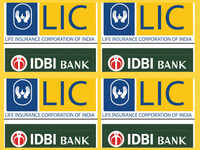Don't fall into a debt trap by borrowing more
Uma Shashikant | TNN | Oct 22, 2018, 14:12 ISTHighlights
- Seek help to be debt-free as quickly as possible
- No further loans should be taken to repay what has already been borrowed
- The debt trap is created when new loans are taken to repay older loans
 (Representative image)
(Representative image)NEW DELHI: While discussing financial planning with a young couple, I found that the husband was brushing aside most suggestions to save more. He told me there was time to worry about retirement and he kept returning to the problem of having too little income to think of other things. Then, the real issue came up: indebtedness.
It is not uncommon to find young couples borrowing to meet their needs. Many also live in complete denial. An overdue credit card is a killer debt. Not only does the amount due increase at usurious rates of interest, but the repayment gets tougher as the loan gets bigger. Habitual borrowers then seek more discreet lenders among friends, informal lenders, etc, only to find that they have run out of friends. Informal lenders not only seek higher interest rates but are also capable of using questionable means for recovery. So, what can a habitual borrower do to return to the path of saving for long-term goals?
First, no further loans should be taken to repay what has already been borrowed. The debt trap is created when new loans are taken to repay older loans. The repayment of a loan has to come from income. The husband in the story was reluctant to ask his wife to find a job, as he worried that she would be upset with the loans they had. Both partners should be aware of all income, expense, and they must also make all money decisions together.
Second, seek help to restructure and re-organise existing loans. Many banks have a debt restructuring and advice facility that helps chronic borrowers. There are also external agencies that can help. Seek professional help to see what is due, and how it can be reworked. Credit card dues can be converted into personal loans; penalties can be negotiated for waiver; repayment schedules can be structured in line with capability of the borrower.
Third, do not hesitate to put assets to use. Assets such as house, investments, provident fund balance and gold, can be pledged or mortgaged to raise money. Assets can also be sold to repay the loans. Many borrowers worry about saving face and social costs. With some help, they may be able to make decisions that have shortterm costs but long-term benefits.
Fourth, place a curb on spending and usage of credit for consumption. Learning to live within means is not easy. Adopting a lifestyle that is in line with earnings, making sacrifices to ensure that debt is paid off, as a means to come back debt-free are all decisions that require determination. There are several instances of psychological damage that severe indebtedness can create, including depression and suicidal tendencies. It is important to take help before it is too late.
Fifth, it is important to see that debt can be reduced only by repayment. Deepening the crisis by borrowing more are not solutions. Debt incurred has to be repaid, and figuring how this can be done is what debt restructuring is about. Seek help before it is late.
(The author is chairperson of The Centre for Investment Education and Learning.)
It is not uncommon to find young couples borrowing to meet their needs. Many also live in complete denial. An overdue credit card is a killer debt. Not only does the amount due increase at usurious rates of interest, but the repayment gets tougher as the loan gets bigger. Habitual borrowers then seek more discreet lenders among friends, informal lenders, etc, only to find that they have run out of friends. Informal lenders not only seek higher interest rates but are also capable of using questionable means for recovery. So, what can a habitual borrower do to return to the path of saving for long-term goals?
First, no further loans should be taken to repay what has already been borrowed. The debt trap is created when new loans are taken to repay older loans. The repayment of a loan has to come from income. The husband in the story was reluctant to ask his wife to find a job, as he worried that she would be upset with the loans they had. Both partners should be aware of all income, expense, and they must also make all money decisions together.
Second, seek help to restructure and re-organise existing loans. Many banks have a debt restructuring and advice facility that helps chronic borrowers. There are also external agencies that can help. Seek professional help to see what is due, and how it can be reworked. Credit card dues can be converted into personal loans; penalties can be negotiated for waiver; repayment schedules can be structured in line with capability of the borrower.
Third, do not hesitate to put assets to use. Assets such as house, investments, provident fund balance and gold, can be pledged or mortgaged to raise money. Assets can also be sold to repay the loans. Many borrowers worry about saving face and social costs. With some help, they may be able to make decisions that have shortterm costs but long-term benefits.
Fourth, place a curb on spending and usage of credit for consumption. Learning to live within means is not easy. Adopting a lifestyle that is in line with earnings, making sacrifices to ensure that debt is paid off, as a means to come back debt-free are all decisions that require determination. There are several instances of psychological damage that severe indebtedness can create, including depression and suicidal tendencies. It is important to take help before it is too late.
Fifth, it is important to see that debt can be reduced only by repayment. Deepening the crisis by borrowing more are not solutions. Debt incurred has to be repaid, and figuring how this can be done is what debt restructuring is about. Seek help before it is late.
(The author is chairperson of The Centre for Investment Education and Learning.)
Download The Times of India News App for Latest Business News.










































All Comments ()+^ Back to Top
Refrain from posting comments that are obscene, defamatory or inflammatory, and do not indulge in personal attacks, name calling or inciting hatred against any community. Help us delete comments that do not follow these guidelines by marking them offensive. Let's work together to keep the conversation civil.
HIDE